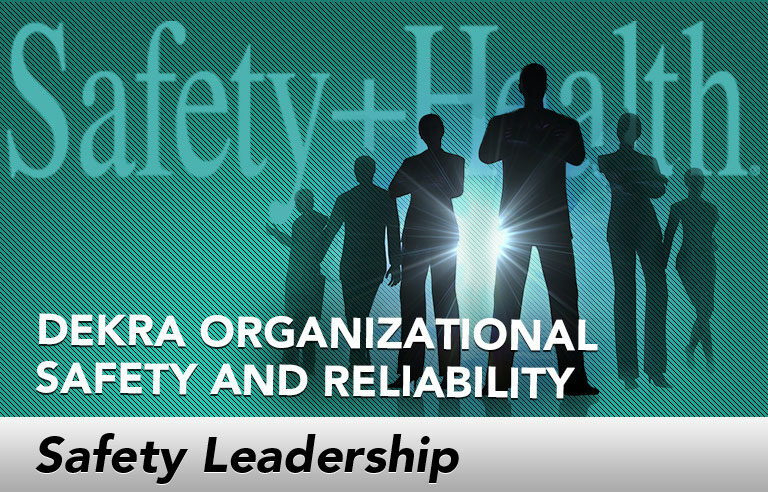Safety Leadership: Balancing urgency and execution

Editor’s Note: Achieving and sustaining an injury-free workplace demands strong leadership. In this monthly column, experts from global consulting firm DEKRA Insight share their point of view on what leaders need to know to guide their organizations to safety excellence.
Staying competitive in today’s rapidly changing business environment demands a sense of urgency and bold innovation. At the same time, organizational leaders must encourage safety and support flawless execution on the front lines.
The challenge is achieving the right balance.
Urgency vs. execution
Urgency and execution are rival values competing for attention. On one hand, urgency is essential to the life of any organization. Without it, organizations risk being left behind.
On the other hand, organizations can take urgency too far. In a high-urgency environment, we see a focus on deadlines despite errors and an emphasis on output above all else. Although high urgency may prove fruitful in the short term, its too-fast work pace creates an environment that is doomed to fail in the long term – or worse, cause injury or catastrophe.
The neuroscience of urgency
From a neuroscience perspective, urgency pressures are a major source of stress, causing work to occur in a reactive, repetitive-processing manner. This is referred to as “fast brain” execution – when little conscious attention is given to a task.
Although everyone works in this manner from time to time, prolonged periods lead to more mistakes, incidents and poor decisions. We’re even more likely to be on autopilot when we’re behind in production or at risk of missing a deadline.
Slowing down
Contrast the urgent environment with a flawless-execution environment, in which people have the space to carefully consider their options and consciously tend to their work. These high-function activities are part of the “slow brain,” which focuses less on speed and more on high-quality performance, diligence and attention to detail.
A slow brain environment provides individuals with the time to question whether the assumptions under which they, and their enterprise, have been operating still are valid. For industries such as refining, chemicals, power generation and nonemergency surgery, most leaders recognize the supremacy of a slow brain, flawless-execution environment over one driven excessively by urgency and the fast brain.
Promote urgency judiciously
When executives communicate the need to take risks in innovation and be aggressive in the market, they need to consider how these translate to operations. How do employees reconcile quality and safety when they hear they need to, in the words of Facebook CEO Mark Zuckerberg, “move fast and break things”?
The greatest danger of the urgency message is when it’s transmitted unfiltered to operations. When this happens, it may result in a loss in the management-of-change process and an increase in risk-taking. We know that executives don’t want quality, customer service or safety to suffer, and yet, if the communication process isn’t carefully choreographed, leaders leave to chance how their messages are interpreted at the worker level. As a leader, ask yourself:
- To what extent are errors and incidents in my operations a result of urgency? How would I know?
- How well is my management-of-change system working?
- What messages am I sending to operations about what’s important to me?
- When values or goals conflict, how confident am I that the right decisions will be made?
- Are operators focused on controlling exposure, or do they take a risk-based approach to decisions?
Getting a better sense of how urgency is used to create change in your organization can help improve exposure awareness and provide leaders with effective tools to drive a culture of reliability.
This article represents the views of the authors and should not be construed as a National Safety Council endorsement.
 Don Groover, CIH (retired), CSP, is senior vice president of DEKRA Insight. He develops solutions that leverage the latest technology and advancements to improve safety performance in client organizations.
Don Groover, CIH (retired), CSP, is senior vice president of DEKRA Insight. He develops solutions that leverage the latest technology and advancements to improve safety performance in client organizations.
 Mike Mangan is vice president of Research and Development for DEKRA Organizational Safety and Reliability. He facilitates global thought leadership and technology development in support of safer workplaces.
Mike Mangan is vice president of Research and Development for DEKRA Organizational Safety and Reliability. He facilitates global thought leadership and technology development in support of safer workplaces.
Direct to your inbox: Sign up to be notified in email about new "Safety Leadership" columns.
Post a comment to this article
Safety+Health welcomes comments that promote respectful dialogue. Please stay on topic. Comments that contain personal attacks, profanity or abusive language – or those aggressively promoting products or services – will be removed. We reserve the right to determine which comments violate our comment policy. (Anonymous comments are welcome; merely skip the “name” field in the comment box. An email address is required but will not be included with your comment.)

